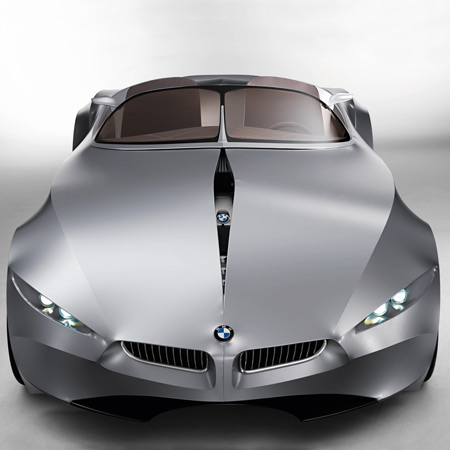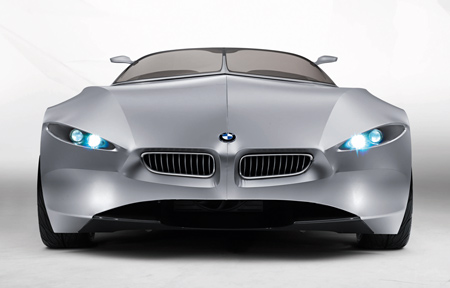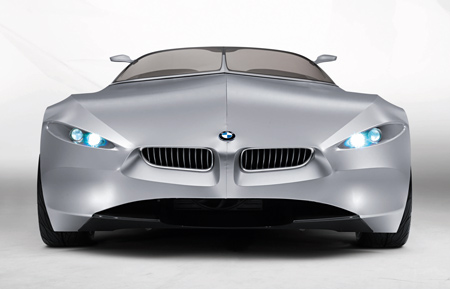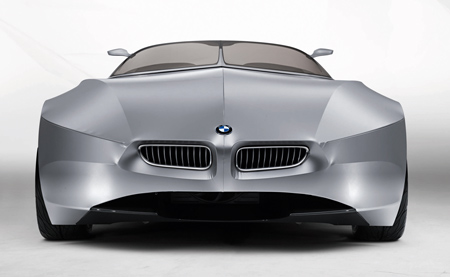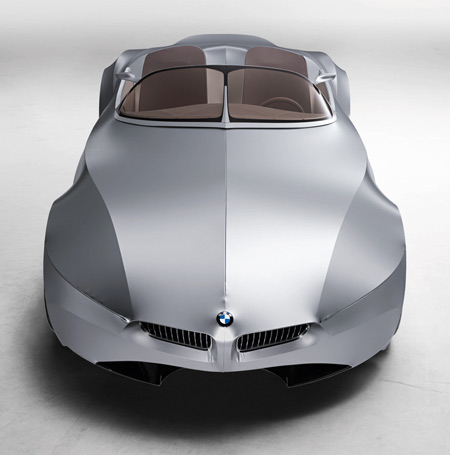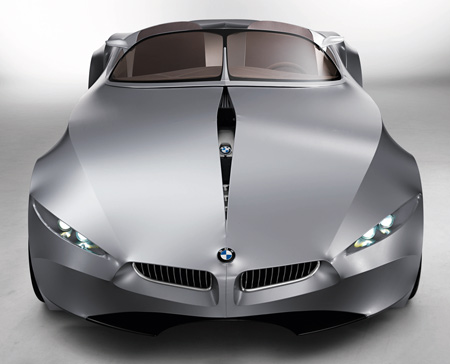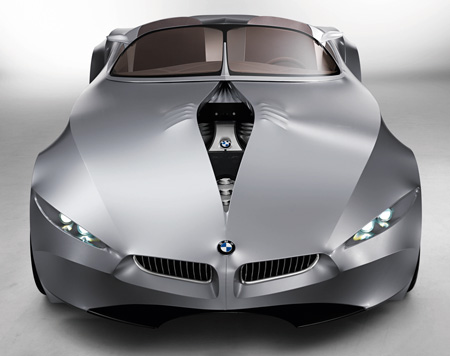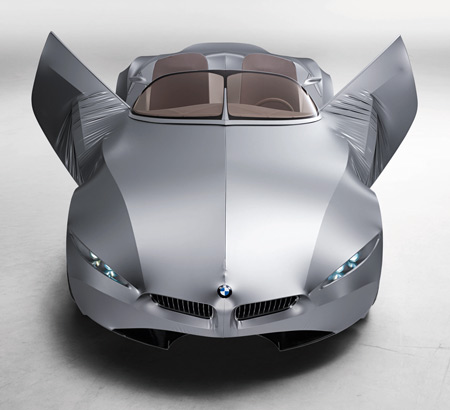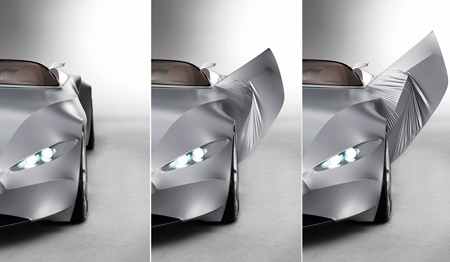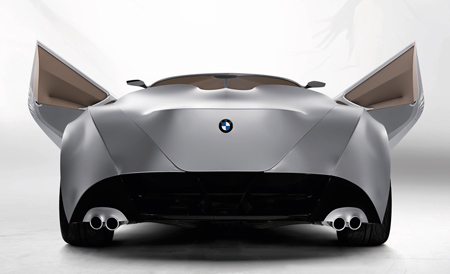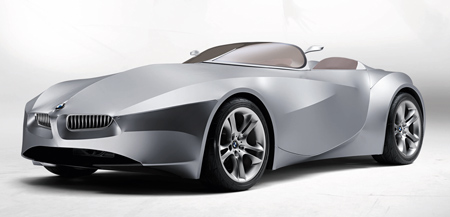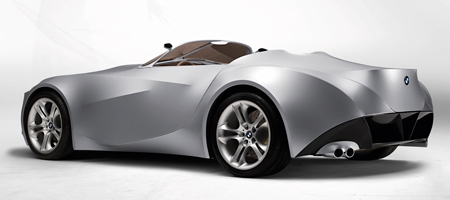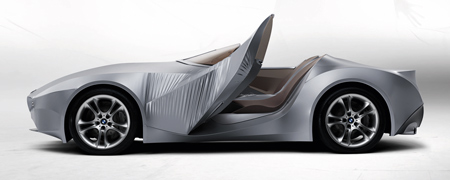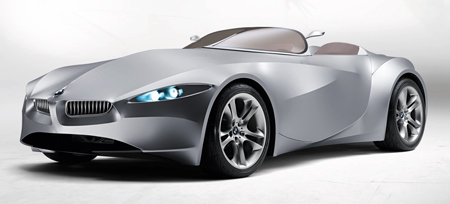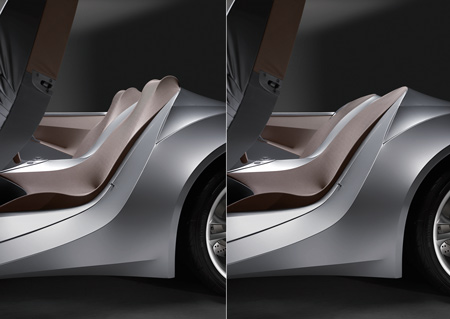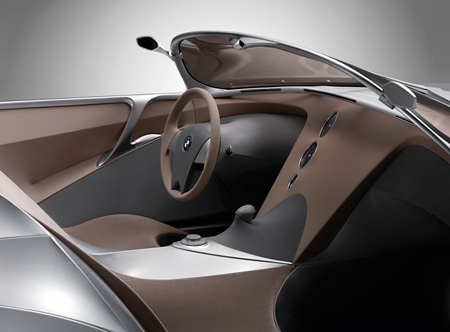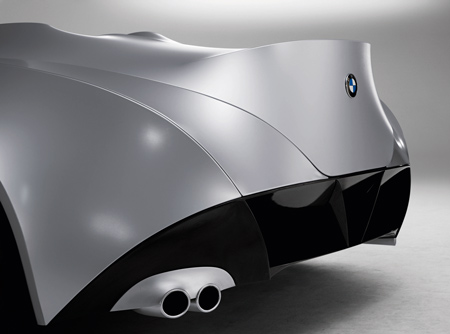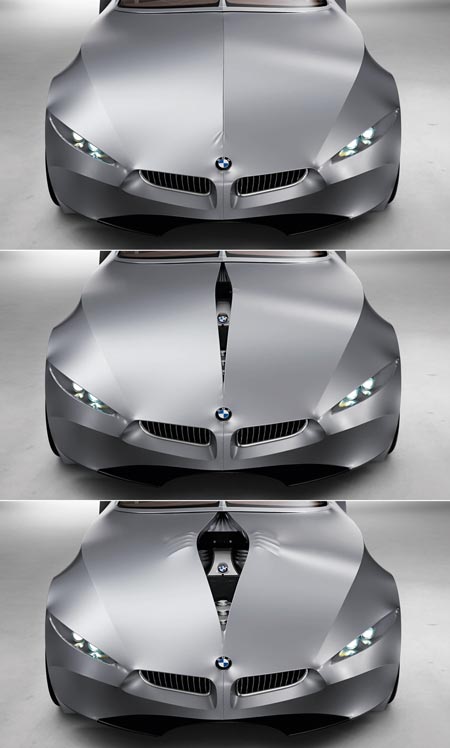
Sunday, March 28, 2010
MODIFIKASI SUZUKI SWIFT TO RALLY RACING CAR

MODIFIKASI HONDA FREED PINK 2010 FOR GILRS STUDENT

2010 RDX Peugeoet 2007 Modifikasi




The rear accent adapter for all 207-models except the SW, is adequate for use with the afterwards exhaust, but additionally for one- and alternating activity broke systems, as it is delivered afterwards any cuts for the end pipes.Also for the 207 analysis kit, RDX RACEDESIGN offers its accustomed RDX amalgamation prices. If you opt for the avant-garde spoiler, the accent skirts and the rear accent attachment, you will acquire a 10-percent abatement on the abandoned prices. The RDX RACEDESIGN Peugeot 207 CC bulk for the analysis kit is 655 Euros. For added admonition about the RDX RACEDESIGN products
Tuesday, March 23, 2010
BMW M series
BMW Commissions
Olafur Eliasson, one of the most significant representatives of contemporary art, has been assigned to design the 16th BMW Art Car, with which yet another work of art will be added to the BMW Art Car Collection. In 2005, this internationally unique collection comprising to date a total of fifteen BMW automobiles designed by famous male and female artists, will be celebrating its 30th anniversary. With this assignment Eliasson has taken on the challenge of transforming a technological milestone, the BMW H2R, with which the BMW Group is pursuing its vision of sustained mobility based on the regenerative production of hydrogen as a fuel of the future. By doing this, BMW has committed itself to continue with its innovative cooperation with international artists working in the field of technology, mobility and art.
The artist Olafur Eliasson was selected by an international board of curators which met in April 2005 to discuss the future of the BMW Art Car Collection. The following persons attended the workshop: Bruce W. Ferguson, Dean of the Columbia University in New York, Pi Li from the Central Academy of Fine Arts in Peking, Suzanne Pagé, Director of the Musée d’Art Moderne de la Ville de Paris, Larry Rinder, Dean of the California College of the Arts in San Francisco, Donna de Salvo, Curator at the Whitney Museum of American Art and Prof. Dr. Carla Schulz-Hoffmann, Director of the Pinakothek der Moderne in Munich.
BMW CS Concept
The BMW CS Concept four-door coupe at the recent Australian International Motor Show is the brainchild of BMW Director of Design, Chris Bangle.
Tipped to enter production as an 8-series, the CS will go head-to-head with the likes of the Mercedes-Benz CLS-class, the upcoming Porsche Panamera and Aston Martin Rapide.
BMW X5
BMW's X5 line has needed an overhaul for a while now, and it got one for 2007. The all-new 2007 BMW X5 ($TBA) features more interior room with a third row of seating, a new inline six-cylinder engine that makes 260hp — an even more powerful 350hp, 4.8L V8 is also an option — enhanced x-Drive all-wheel drive, 50/50 weight distribution, and more tech-oriented options than ever before, including standard run-flat tires, the BMW Assist Bluetooth system, an iDrive on-board control system, heads-up display, rear-view camera for parking, and a premium sound system that features 600 watts of power, Dolby 5.1 surround sound and 16 speakers. One of the most elegant, complete SUVs on the road just got a whole lot better.
GINA Light Visionary Model by BMW
The GINA Light Visionary Model by BMW is a concept featuring a flexible fabric skin stretched over an articulated metal frame, meaning the car can change shape.
Developed by BMW Group Design and unveiled yesterday, the concept is meant to provoke discussion about the possibilities of car design in the future.
Doors open upwards and outwards, creating folds in the material that disappear when the doors are closed again.
For maintenance, the engine cover opens along its centre.
Features such as headlights are hidden beneath the skin and only become visible when needed.
Here’s some more information from BMW:
–
The BMW GINA Light Visionary Model. Innovative approach and optical expression of creative freedom.
The key to affecting the development of tomorrow’s mobility lies in our readiness to challenge what is established and in the ability to present new options. In order to meet these objectives, BMW Group Design taps into the potential of the GINA principle (Geometry and Functions In “N” Adaptions) which promotes innovative thinking by allowing maximum freedom of creativity. GINA produces dramatically different solutions that affect the design and functionality of future cars. The GINA Light Visionary Model is an optical expression of selective, future-oriented concepts which provide an example of the manner and extent of this transformation.
BMW Group Design is not just interested in answering the question of how the car of the future will look but primarily wishes to explore the creative freedom it has to offer. Both of these aspects are affected by the requirements that future cars are expected to meet. All ideas that the GINA Light Visionary Model presents are therefore derived from the needs and demands of customers concerning the aesthetic and functional characteristics of their car and their desire to express individuality and lifestyle. The GINA Light Visionary Model has an almost seamless outer skin, a flexible textile cover that stretches across a moveable substructure. Individual functions are only revealed if and when they are needed.
With this model, BMW Group Design initiates a fundamental discourse about the characteristics that will affect the development of cars in future. It is therefore fundamentally different from concept cars, which reflect what is expected of them by implementing as many elements as possible in a future production model. In contrast, the GINA Light Visionary Model is a vision of future cars and serves as an object of research.
The seamless car body of the GINA Light Visionary Model.
Putting its visions of tomorrow’s car into practice, BMW Group Design has developed a two-seater roadster with the unique dynamic proportions that are typical of its brand. The GINA Light Visionary Model takes the sculptural design that has already been established by a number of production cars to a new, unparalleled conclusion. The car’s front and sides, including the doors, create one single uninterrupted, seamless whole that converges to form an optical as well as a structural unit.
In order to create this appearance, it was necessary to move beyond all previous conceptions of car body configuration, design and materials. Therefore, the GINA Light Visionary Model has dispensed with the usual body elements found on production vehicles such as front apron, bonnet, side panels, doors, wheel arches, roof, trunk lid and rear deck. Instead, a new structure with a minimum amount of components has taken their place. A special, highly durable and extremely expansion-resistant fabric material stretches across a metal structure. This new material offers designers a significantly higher level of freedom of design and functionality.
The body consists of only four elements. The largest component extends from the front of the vehicle to the edge of the windscreen and down the sides to the rear edge of the doors. The large side panels start at the front where the rocker panels emerge and run across the rear wheel arches into the rear. The fourth component is the central rear deck element.
An innovation breaks new ground: car with a flexible outer skin.
The innovation of a flexible outer skin breaks new ground in automotive engineering. This revolutionary solution opens up new design, production and functionality potential. It has a major impact on the interaction between driver and car and enhances it by offering a variety of entirely new options. Some elements of the substructure are moveable. The driver can move them by means of electro and electro-hydraulic controls. This will also change the shape of the outer skin, which can thus be adapted to suit the current situation, the driver’s requirements and can also enhance the car’s functional range.
The most striking example of this is the headlight design. In normal position, when the headlights are not active, i.e. when there is no necessity to illuminate the road, they are hidden under the special fabric cover. As soon as the driver turns on the lights, the contour of the front end changes. Activated by the metal structure that lies beneath it, the previously closed fabric cover opens to the right and left of the BMW kidney grille and reveals the BMW double head-lights. The rear and the rocker panels of the GINA Visionary Model can also adapt both the shape and function to the driving situation in hand. Both can change the shape of their outer skin to meet the driver’s requirement for particularly dynamic motoring.
This concept also takes into account a potential interaction with aerodynamic requirements. The design of the rear element allows for automatic lifting of the rear spoiler when a certain speed is reached, thus creating extra downforce on the rear axle at higher speeds. Due to the fact that the entire rear end, including the spoiler, is covered by a single sheet of material that reaches as far as the rear compartment of the interior, the homogeneous shape of the car’s rear will not be affected by changes to the spoiler position. The mechanical system that moves the elements remains concealed.
The turn indicators and the taillights function without changes to the shape of the outer skin. Their position, however, is only revealed upon activation. The emitted light shines through the translucent fabric cover, which is permeable to light but not transparent.
The rocker panels demonstrate the formal versatility of the GINA Light Visionary Model with an equally impressive performance. The air duct can be optimised if required. A corresponding movement of the metal structure results in an adjustment of the rocker panel contour to allow for better airflow. At the same time, an additional protruding rocker panel line emerges. The aerodynamic optimization and the length of the line can be infinitely adapted to the driving situation at hand.
Special fabric cover ensures accurate reproduction of material folds.
The fact that the body surface is designed by means of a flexible fabric cover that stretches across a metal substructure means that the materials used must meet exacting requirements. Industrially produced hybrid fabric made from a stabilizing mesh netting support and an outer layer that is both water-repellent and resistant to high and low temperatures is suitable for this application.
Another essential material property is a maximum level of dimensional stability. It must remain dimensionally stable irrespective of the temperature and air humidity it is exposed to even after severe and constant expansion. The dimensional stability helps retain the cover’s surface tension for a long period of time. The movement of individual body elements creates accurately reproducible folds in the material. In its choice of material BMW Group Design was inspired by exterior and interior architecture. The expertise of seat pattern designers working for BMW Group Interior Design was successfully applied in order to cut the fabric webbing to size with maximum precision, determine the strategic position of attachment points and stretch the material. As a result, the surfaces are remarkably well balanced and due to the steady tension that is retained between any two clearly defined points, the lines are extremely accurate.
The special fabric is supported by a metal wire structure. At specific points, the high-strength metal is enhanced by carbon struts with a higher flexibility. They are used predominantly for round, moving contours with a particularly narrow radius.
The use of large fabric areas and the possibility of changing the surface contours by moving individual parts of the metal mesh that lies beneath it create a new relationship between form and function. If additional cooling air is required, the BMW kidney grille at the front of the vehicle can be opened. Because the overall surface of the special fabric covering remains unchanged, the contraction at the front of the vehicle, which is necessary for functional reasons, has to be compensated for by extra tension in other areas. The result is an optically attractive interaction between various body parts that introduces a new dimension to sculptural design. The widening of the kidney grille openings is activated by a movement of the metal mesh in the front area of the side panels. This creates more tension, which becomes visible by the emergence of an additional character line. The development of this new contour tenses the front of the vehicle: the kidney grille opens up.
Innovative body structure introduces new functional dimensions.
The high-precision fit of the material to the metal mesh also allows surface changes without slackening the tension. In this case, opening of the surface by moving the respective steel mesh struts creates precisely defined folds in the material. The GINA Light Visionary Model uses this option to display a function that corresponds to the opening of the hood in conventional vehicles. The material opens at the centre of the engine cover and can be folded to the far right and left along an opening line that is approximately 0.5 meters long, to allow the driver or mechanic access to the service points in the engine.
The filler caps of the engine oil, cooling and wiper water tanks are now open for servicing. Opening and closing is similar to the mechanism on a doctor’s traditional medical bag, where clip-lock fasteners are held together in the middle by a rail.
The effect of the accurate surface material draping is even more impressive when the doors are opened. They swing both outwards and upwards. The high number of attachment points for the fabric cover positioned at the front of the car as well as at rear door edges creates a clearly defined and perfectly reproducible bulk of material. The draping is confined to the area between the front door edge and the side panel. Once the doors are closed, the folds in material disappear completely, leaving a perfectly smooth, stretched material surface.
The interior: discourse between driver and vehicle.
In the interior, variability, form and function are united in an inseparable connection. Whenever selected functions are accessed, the driver also changes the appearance of individual car elements. Again, the car’s variability is adapted to suit the driver’s needs. This creates a close interaction between driver and car in various different situations.
When the car is parked, the steering wheel and the round instruments – rev counter, speedometer and fuel gauge, which are vertically arranged on the centre console, are in idle position. This provides the driver with maximum comfort upon entering the car. Likewise, the seat only assumes its optimised functional position and shape if and when the driver sits down on it.
At that point, the headrest, previously firmly integrated into the seat’s backrest, rises up automatically. At the same time, the steering wheel moves towards the driver and the instrument panel moves in the same direction. The information on the best driver-specific position of both steering column and seat is stored in the transducer. The engine is started simply by pushing the start/stop button.
The smooth transition of interior and exterior that is typical of BMW convertibles is reinterpreted by the GINA Light Visionary Model. The fabric that covers the rear deck runs into the interior and stretches across the driver and front passenger seats. The same material is also used for the surface design of the door trim and armrests. The shift lever in the centre console protrudes from tightly stretched textile bellows.
Driver and front seat passenger look out through a steeply inclined windscreen with the inside rear view mirror integrated into its frame. The side view mirrors are connected to the window frame. A narrow vertical dividing bar located at the center of the windscreen harks back to the typical windscreen division of traditional roadsters.
Innovative thinking put into practice: the GINA Light Visionary Model.
With the GINA Light Visionary Model, BMW Group Design focuses on a wide variety of issues that will determine the future conception of mobility.
It demonstrates the results of intense research into design, functionality, material and production. All ideas that have been put into practice in the GINA Light Visionary Model are derived from the same motivation: to challenge conventional and previously pursued solutions. The quest for alternative options has generated a wide variety of different requirements that potential solutions are expected to meet. The main focus is on providing general versatility and catering to customer requirements with sophisticated solutions. In accordance with the GINA principle, every functionality enhancement helps to create an emotional bond between the driver and their car. The new solutions also allow for the option of fast, flexible and cost-efficient production.
Every innovation demonstrated by the GINA Light Visionary Model also contributes to a clearly optimised resource management. As the quest for sustainability is one of the central issues of the GINA philosophy, new materials and manufacturing processes are expected to consume less resources and energy than previous solutions. Accordingly, the infrastructure used for manufacturing cars that are built in compliance with the GINA principle, has also changed. The manufacturing process requires fewer model-specific tools, and more highly-qualified skilled specialists. In all the areas referred to above, the GINA Light Visionary Model has provided inspiration for more intense research into ideas conceived as a result of maximum creative freedom.
Emotional appeal of roadster models and visionary prospect of future cars.
The solutions conceived as part of this philosophy are not considered separately, but have been pooled in an integrating vision – a vision that is expressed in the context of an outstanding, fascinating car. The basic features of a roadster with its eight-cylinder combustion engine below a stretched front that applies motive power to the rear wheels in order to move the car along the road defines this context. The synthesis of elementary visions and sheer driving pleasure expressed by the appearance of the GINA Light Visionary Model has a particularly striking emotional impact. Only the particular appearance of a fascinating car with its authentic design that creates a natural aesthetic look can bring to light the significance of the presented innovations.
The GINA Light Visionary Model builds a bridge between vision and reality by presenting a number of features with a striking similarity with those found on production vehicles. The Roadster rests on 20″ alloy wheels in a cross-spoke design with a matt silver finish. The car body is comprised of an exceptionally light aluminum space frame. Two double tailpipes for the rear exhaust system, a third brake light integrated into the height-adjustable rear spoiler, an air splitter at the front and a rear-end diffuser in a carbon design also meet the standards of a production vehicle.
Nevertheless, the GINA Light Visionary Model retains its character as an object of research. It demonstrates the innovative force of BMW Group Design and its ability to challenge what is established, to find new solutions and to interpret these in the context of the car of the future at a high aesthetic level. This car is the logical continuation of the GINA principle in action. The GINA principle has already led to a variety of innovative concepts and has production vehicles in ways that are completely new and unprecedented by any other car manufacturer.
BMW Group Design uses concept cars such as the BMW concept car CS1 of 2002 as a step on the way towards putting a particular vision into practice. The CS1 was the first to present features such as the basic principle of the innovative control system – the BMW iDrive. Independently from all other innovative features shown by this concept car, the iDrive has become a series production feature.
Similarly, the GINA principle gave rise to an innovative manufacturing method that allows the manufacturers to decorate outer skin components that have been preformed by conventional methods with individually configured, high-precision contour lines prior to their reintegration into the manufacturing process. The Rapid Manufacturing method utilized for this process was first used during the production of hoods for the BMW Z4 M Roadster and the BMW Z4 M Coupé. In these models, the finished hood has received two distinctive contour lines prior to painting. These are not produced by a pressing tool but embossed into the metal with pin-point precision by a robot-guided steel pin.
Both examples illustrate the challenging route from a vision to a concept and to final series production that is not always straight and direct. With the GINA Light Visionary Model, BMW Group Design shows where this route begins. Not all innovations shown by the GINA Light Visionary Model will proceed to the next stages. In its entirety, however, the visionary look into the future shows the extent to which the BMW Group employs creative potential in its endeavour to respond to the challenges of tomorrow’s mobility.
Posted on Wednesday, June 11th, 2008 at 4:28 pm by Rose Etherington. See our copyright policy. Follow comments through the RSS 2.0 feed.
BMW M1
Normally I’m more into Italian car design … but this BMW M1 Hommage just look like a mean lean racing machine. BMW presented this study last weekend the Concorso d’Eleganza at Villa d’Este to celebrate the thirtieth birthday of the BMW M1, a true classic. Actually, they only did the body design, it doesn’t have an interior or even a motor. If you want to see more angles and details, check you this gallery.
BMW M3
 Like Mercedes-Benz with its AMG in-house racing and high-performance specialists, BMW has created its M division, primarily responsible for motorsports, but also for high-performance cars, including the M3 version of the 3 Series, the M5 version of the 5 Series, and the M6 version of the 6 Series (no M7 yet, and no high-performance versions of their SUVs, but it's only a matter of time). Every one of the previous generations was powered by a modified version of the famous BMW inline six-cylinder engine, but this new generation has broken with that long tradition to become the first V8-powered M3 in BMW history.
Like Mercedes-Benz with its AMG in-house racing and high-performance specialists, BMW has created its M division, primarily responsible for motorsports, but also for high-performance cars, including the M3 version of the 3 Series, the M5 version of the 5 Series, and the M6 version of the 6 Series (no M7 yet, and no high-performance versions of their SUVs, but it's only a matter of time). Every one of the previous generations was powered by a modified version of the famous BMW inline six-cylinder engine, but this new generation has broken with that long tradition to become the first V8-powered M3 in BMW history.
Full Review 2008
The first car to arrive, the M3 coupe, will be replete, including every available safety feature from ABS to stability control, traction control, six air bags, and run-flat high-performance tires.
The M3 also packs a tremendous amount of electronic wallop, with dynamic stability control having new interconnected control features, electronic damper control for the shock absorber settings, iDrive for the radio, navigation and telephone as well as two different power steering modes, normal and sport, that can be selected through iDrive.
Trims and Styling 2008
 The 2008 BMW M3 coupe ($57,275) and sedan ($54,575) come with a high-performance 4.0-liter V8 mated with a six-speed manual transmission.
The 2008 BMW M3 coupe ($57,275) and sedan ($54,575) come with a high-performance 4.0-liter V8 mated with a six-speed manual transmission.
Although the M3 is quite complete, there is an option list, containing items like DVD navigation, the competition brakes, Electronic Damper Control, the MDrive electronic control system, adaptive headlamps that turn corners before the car does, an optional interior lighting scheme that paints a rim of light around the entire cockpit, leather upholstery, and a 16-speaker, 825-watt sound system.
An important option is MDrive, an electronic control system that enables the driver to tailor suspension, steering, and engine performance to his own personal tastes and style, with almost 300 possible combinations, using a single button on the multi-function steering wheel to switch from the normal mode to the M mode. The MDrive system was piloted on the larger, more expensive M5 sedan and M6 coupe and convertible and is available on the new 3 Series for the first time.
Exterior Design and Style
The exterior appearance of the M3 coupe is suitably distinctive, front, side, rear and roof, compared to any other 3 Series coupe. The body of the new M3 is a combination of steel, aluminum, and the aforementioned carbon-fiber roof panel, with an aluminum hood that carries a distinctive power bulge to clear the V-8 engine underneath it. Interior Features
 It carries a special small-diameter, high-grip leather-covered M steering wheel with redundant controls for the audio system and optional telephone. To complement the wheel, there is a set of competition-flavored, body-gripping bucket seats up front, each one built with a special foam inside for excellent upper body support in fast corners. There's the usual array of discreet red, white and blue M decorations on the seats, door panels, and instrument panel. The white-on-black instruments are typical BMW, with red pointers, and the tachometer can change its yellow-line and red-line limits depending on engine oil temperature, a featured designed to prevent premature engine wear on cold days.
It carries a special small-diameter, high-grip leather-covered M steering wheel with redundant controls for the audio system and optional telephone. To complement the wheel, there is a set of competition-flavored, body-gripping bucket seats up front, each one built with a special foam inside for excellent upper body support in fast corners. There's the usual array of discreet red, white and blue M decorations on the seats, door panels, and instrument panel. The white-on-black instruments are typical BMW, with red pointers, and the tachometer can change its yellow-line and red-line limits depending on engine oil temperature, a featured designed to prevent premature engine wear on cold days.
First Drive 2009
With the 414-horsepower V8 engine, an engine fully capable of 8400 rpm, the slick BMW six-speed manual transmission, and a cockpit made for high-performance driving, the V8-powered M3 is nothing short of spectacular. We've driven all of the previous M3s, but we've never experienced this level of acceleration, braking, steering and handling in an M3. It's a 4.0-liter 32-valve, 414-horsepower all-aluminum masterpiece that shares much of its design and componentry with the 5.0-liter V10 engines used in the bigger, more expensive M5 and M6 performance cars. The new V8 features variable valve timing on both intake and exhaust valves (which BMW calls Double VANOS), and unlike most V8 engines, it uses eight individual throttle assemblies, like racing engines, controlled by drive-by-wire electronics.
This is the highest-revving BMW production engine ever built, revving up to a maximum of 8400 rpm, and it makes maximum power at 8300 rpm. Maximum torque is 295 foot-pounds. BMW says it will take the new lightweight coupe form 0-62 mph or 0-100 kilometers per hour in just 4.8 seconds, topping out at a limited 155 mph. The engine weighs some 33 pounds less than the smaller inline six-cylinder engine it replaces. Underneath the carbon-fiber roof panel and the slick new bodywork, there is a brand new chassis and suspension system, a lightweight suspension featuring MacPherson strut front suspension, lightweight five-link rear suspension, and one of the most wonderful, linear and responsive power steering systems we have ever used. The differential has a locking feature than can transmit up to 100 percent of the available engine power to whichever rear tire has more traction. The huge ABS brakes, 14.2 inches front and 13.8 inches rear, feature iron rotors and aluminum hubs, with ventilated discs all around, and a unique brake energy regenerating system, usually found on hybrids, that uses the brakes to charge the battery and shuts off the alternator during acceleration and cruising. There's an optional competition brake system that's even more powerful than the standard brakes.
 The new M3 also brings with it an ideal 50/50 front/rear weight distribution, and a host of electronic chassis systems including traction control, dynamic stability control, cornering brake control, a start-off assistant to keep the car from rolling forward or back on grades, a driver's choice of three different shock absorber modes with the optional EDC system.
The new M3 also brings with it an ideal 50/50 front/rear weight distribution, and a host of electronic chassis systems including traction control, dynamic stability control, cornering brake control, a start-off assistant to keep the car from rolling forward or back on grades, a driver's choice of three different shock absorber modes with the optional EDC system.
2009 Conclusions BMW M3
The BMW M3 is the defining performance car for the lineup of 3 Series cars that define BMW. Edmunds.com praises the M3 for "Powerhouse V8 performance, coupe, convertible or sedan body styles available, athletic chassis, top-notch build quality." Caranddriver.com says "To know it is to love it, and to speak its name is to want it." This is a lot of high-performance car in a small package.
Monday, March 22, 2010
2010 Maserati GranTurismo Specification
-
4,244 cc 4.2 liters V 8 front engine with 92.0 mm bore, 79.8 mm stroke, 11.0 compression ratio, double overhead cam, variable valve timing/camshaft and four valves per cylinder
-
Premium unleaded fuel 91 and petrol
-
Multi-point injection fuel system
-
22.7 gallon main premium unleaded fuel tank 18.9
-
Power: 302 kW , 405 HP SAE @ 7,100 rpm; 339 ft lb , 460 Nm @ 4,750 rpm
2010 Maserati GranTurismo Base Coupe Handling, Ride & Braking Standard Features
-
ABS
-
Cornering brake control
-
Four disc brakes including four ventilated discs
-
Electronic brake distribution
-
Electronic traction control via ABS & engine management
-
Immobilizer
-
Rear limited slip differential
-
Driver selectable responsive suspension electronic
-
Stability control
-
Wishbone front and rear suspension independent with stabilizer bar and coil springs
-
Tire kit
2010 Maserati GranTurismo Base Coupe Exterior & Aerodynamics Standard Features
-
Painted front and rear bumpers
-
Driver power heated painted door mirrors, passenger power heated painted door mirrors with automatic
-
External dimensions: overall length (inches): 192.2, overall width (inches): 75.4, overall height (inches): 53.3, wheelbase (inches): 115.8, front track (inches): 62.4, rear track (inches): 62.6 and curb to curb turning circle (feet): 35.1
-
Electric foldable mirrors
-
Front fog lights
-
Headlight cleaners
-
Projector beam lens Bi-Xenon headlights
-
Luxury trim alloy & leather on gearknob, titanium look on doors and titanium look on dashboard
-
Metallic paint
-
Fixed rear window with defogger
-
Weights: curb weight (lbs) 4,145
-
Windshield wipers with automatic intermittent wipe and rain sensor
2010 Maserati GranTurismo Base Coupe Interior Standard Features
-
12v power outlet: cargo
-
Air conditioning with fully automated climate control 2 and auto
-
Element antenna
-
Interior monitoring anti-lift anti-theft protection
-
Front ashtray
-
Bose RDS audio system with AM/FM and CD player CD player reads MP3
-
Cargo capacity: all seats in place (cu ft): 9.2
-
Front seats cigar lighter
-
Clock
-
Coming home device
-
Computer with average speed, average fuel consumption and range for remaining fuel
-
Floor and overhead console
-
Delayed/fade courtesy lights
-
Cruise control
-
Front seats and rear seats cup holders
-
External temperature
-
Driver front airbag with multi-stage deployment, passenger front airbag with occupant switch off and multi-stage deployment
-
Sports heated electrically adjustable driver seat with height adjustment, lumbar adjustment, five adjustments and tilt adjustment electric, electric and electric, sports heated electrically adjustable passenger seat with height adjustment, four adjustments and tilt adjustment electric and electric
-
Height adjustable 3-point reel front seat belts on driver seat and passenger seat with pre-tensioners
-
Front seat center armrest
-
Garage door opener
-
Two height adjustable head restraints on front seats, two head restraints on rear seats
-
Headlight control with dusk sensor active
-
Internal dimensions: front headroom (inches): 39.0 and rear headroom (inches): 35.8
-
Low tire pressure indicator
-
Memorized adjustment with three settings on door mirror position with four driver's seat positions
-
MP3 player
-
Navigational systems : information type: 3D and voice HDD, color and 7.0
-
Parking distance sensors rear and radar
-
Remote power locks
-
Vehicle speed proportional power steering
-
Front power windows with two one-touch
-
Front and rear reading lights
-
3-point reel rear seat belts on driver side and passenger side with pre-tensioners
-
Rear seat center armrest
-
Two fixed individual/sports front facing rear seats
-
Automatic operation rear view mirror
-
Steering wheel mounted remote audio controls
-
Remote control remote trunk/hatch release
-
Front side curtain airbag
-
Leather seat upholstery with additional leather
-
Seating: four seats
-
Service interval indicator
-
Front side airbag
-
Eleven speaker(s) Bose
-
Leather covered steering wheel with tilt adjustment and telescopic adjustment
-
Tachometer
-
Illuminated driver and passenger vanity mirror
-
Ventilation system with micro filter and active carbon filter
-
Voice activating system includes radio settings, includes phone and includes navigation system
HONDA CAR PRICE LIST JANUARI 2010
Honda Car Price
 | The Honda Car Price apply at Indonesia region, esspecially Jabodetabek area. The prices update periodically. This price list is for guidance only. The Actual Honda Car Price vary depend on: region, time, and car dealer. |
Report Price List January 2010
Diff = price this month - price last month
(+ increase , - decrease, in juta rupiah)
![]()
| Car Type | Price (Rp jt) | Diff (Rp jt) |
| Honda Accord VTi 2.4 A/T | 438.0 | 0.0 |
| Honda Accord VTi 2.4 A/T SE | 449.0 | 0.0 |
| Honda Accord VTi 2.4 M/T | 423.0 | 0.0 |
| Honda Accord VTi 2.4 M/T SE | 434.0 | 0.0 |
| Honda Accord VTi-L 2.4 A/T | 477.0 | 0.0 |
| Honda Accord VTi-L 3.5 A/T | 705.0 | 0.0 |
| Honda City E A/T | 281.0 | 0.0 |
| Honda City E M/T | 266.0 | 0.0 |
| Honda City S A/T | 273.0 | 0.0 |
| Honda City S M/T | 258.0 | 0.0 |
| Honda Civic 1.8 i-VTEC A/T | 347.0 | 0.0 |
| Honda Civic 1.8 i-VTEC M/T | 334.0 | 0.0 |
| Honda Civic 2.0 i-VTEC A/T | 398.0 | 0.0 |
| Honda Civic Hybrid | 475.0 | 0.0 |
| Honda CR-V 2.0 i-VTEC A/T | 353.0 | 0.0 |
| Honda CR-V 2.0 i-VTEC M/T | 342.0 | 0.0 |
| Honda CR-V 2.4 i-VTEC A/T | 379.0 | 0.0 |
| Honda Freed A/T | 237.0 | 0.0 |
| Honda Jazz RS A/T | 221.5 | 0.0 |
| Honda Jazz RS M/T | 211.5 | 0.0 |
| Honda Jazz S A/T | 206.0 | 0.0 |
| Honda Jazz S M/T | 196.0 | 0.0 |
| Honda Odyssey 2.4 Tiptronik | 435.0 | 0.0 |
| Honda Stream 1.7L A/T | 231.5 | 0.0 |
| Honda Stream 1.7L M/T | 221.0 | 0.0 |
| Honda Stream 2.0L Tiptronik | 268.5 | 0.0 |
![]()
| Car Type | Year | Price (Rp jt) |
| Honda Accord 23 VTi M/T | 1999 | 88.0 |
| Honda Accord 23 VTi M/T | 2000 | 93.0 |
| Honda Accord 23 VTi M/T | 2001 | 98.0 |
| Honda Accord 23 VTi M/T | 2002 | 103.0 |
| Honda Accord 23 VTi-L M/T | 1999 | 96.0 |
| Honda Accord 23 VTi-L M/T | 2000 | 101.0 |
| Honda Accord 23 VTi-L M/T | 2001 | 106.0 |
| Honda Accord 23 VTi-L M/T | 2002 | 111.0 |
| Honda Accord 24 VTi M/T | 2003 | 160.0 |
| Honda Accord 24 VTi M/T | 2004 | 170.0 |
| Honda Accord 24 VTi M/T | 2005 | 180.0 |
| Honda Accord 24 VTi M/T | 2006 | 190.0 |
| Honda Accord 24 VTi-L M/T | 2003 | 180.0 |
| Honda Accord 24 VTi-L M/T | 2004 | 190.0 |
| Honda Accord 24 VTi-L M/T | 2005 | 200.0 |
| Honda Accord 24 VTi-L M/T | 2006 | 210.0 |
| Honda Accord 24 VTi-L New A/T | 2006 | 260.0 |
| Honda Accord 24 VTi-L New A/T | 2007 | 280.0 |
| Honda Accord A/T | 1997 | 73.0 |
| Honda Accord A/T | 1998 | 78.0 |
| Honda Accord A/T | 1999 | 88.0 |
| Honda Accord A/T | 2000 | 93.0 |
| Honda Accord A/T | 2001 | 96.0 |
| Honda Accord A/T | 2002 | 103.0 |
| Honda Accord A/T | 1999 | 100.0 |
| Honda Accord A/T | 2000 | 105.0 |
| Honda Accord A/T | 2001 | 110.0 |
| Honda Accord A/T | 2002 | 115.0 |
| Honda Accord A/T | 2003 | 170.0 |
| Honda Accord A/T | 2004 | 180.0 |
| Honda Accord A/T | 2005 | 190.0 |
| Honda Accord A/T | 2006 | 200.0 |
| Honda Accord A/T | 2003 | 190.0 |
| Honda Accord A/T | 2004 | 200.0 |
| Honda Accord A/T | 2005 | 210.0 |
| Honda Accord A/T | 2006 | 220.0 |
| Honda Accord All New 24 VTi-L New A/T | 2008 | 400.0 |
| Honda Accord Cielo 22 M/T | 1997 | 73.0 |
| Honda Accord Cielo 22 M/T | 1998 | 78.0 |
| Honda Accord Facelift | 2003 | 103.0 |
| Honda Accord Facelift | 2003 | 108.0 |
| Honda Accord Facelift | 2003 | 123.0 |
| Honda Accord Facelift | 2003 | 128.0 |
| Honda All New Jazz RS A/T | 2008 | 200.0 |
| Honda All New Jazz S A/T | 2008 | 180.0 |
| Honda City 1.3 EX karburator | 1996 | 57.0 |
| Honda City 1.3 EX karburator | 1997 | 60.0 |
| Honda City 1.5 EXi Injection A/T | 1997 | 61.0 |
| Honda City 1.5 EXi Injection A/T | 1996 | 66.0 |
| Honda City 1.5 EXi Injection M/T | 1997 | 63.0 |
| Honda City 1.5 EXi Injection M/T | 1998 | 68.0 |
| Honda City 1.5 VTi Type Z A/T | 2000 | 82.0 |
| Honda City 1.5 VTi Type Z A/T | 2001 | 86.0 |
| Honda City 1.5 VTi Type Z A/T | 2002 | 90.0 |
| Honda City 1.5 VTi Type Z A/T | 2003 | 94.0 |
| Honda City A/T | 2000 | 84.0 |
| Honda City A/T | 2001 | 88.0 |
| Honda City A/T | 2002 | 92.0 |
| Honda City A/T | 2003 | 96.0 |
| Honda City A/T | 2003 | 119.0 |
| Honda City A/T | 2004 | 124.0 |
| Honda City A/T | 2005 | 129.0 |
| Honda City A/T | 2004 | 132.0 |
| Honda City A/T | 2005 | 137.0 |
| Honda City Facelift | 2006 | 150.0 |
| Honda City Facelift | 2007 | 160.0 |
| Honda City Facelift | 2006 | 155.0 |
| Honda City Facelift | 2007 | 165.0 |
| Honda City Facelift | 2006 | 155.0 |
| Honda City Facelift | 2007 | 165.0 |
| Honda City Facelift | 2006 | 160.0 |
| Honda City Facelift | 2007 | 170.0 |
| Honda City New City i-DSi M/T | 2003 | 117.0 |
| Honda City New City i-DSi M/T | 2004 | 122.0 |
| Honda City New City i-DSi M/T | 2005 | 127.0 |
| Honda City New City VTEC M/T | 2004 | 129.0 |
| Honda City New City VTEC M/T | 2005 | 134.0 |
| Honda Civic 1.7 VTi A/T | 2001 | 115.0 |
| Honda Civic 1.7 VTi A/T | 2002 | 120.0 |
| Honda Civic 1.7 VTi A/T | 2003 | 125.0 |
| Honda Civic 1.7 VTi M/T | 2001 | 110.0 |
| Honda Civic 1.7 VTi M/T | 2002 | 115.0 |
| Honda Civic 1.7 VTi M/T | 2003 | 120.0 |
| Honda Civic 1.7 VTi-S A/T | 2001 | 118.0 |
| Honda Civic 1.7 VTi-S A/T | 2002 | 126.0 |
| Honda Civic 1.7 VTi-S A/T | 2003 | 134.0 |
| Honda Civic 1.7 VTi-S A/T Facelift | 2003 | 143.0 |
| Honda Civic 1.7 VTi-S A/T Facelift | 2004 | 153.0 |
| Honda Civic 1.7 VTi-S A/T Facelift | 2005 | 163.0 |
| Honda Civic 1.7 VTi-S M/T | 2001 | 113.0 |
| Honda Civic 1.7 VTi-S M/T | 2002 | 122.0 |
| Honda Civic 1.7 VTi-S M/T | 2003 | 130.0 |
| Honda Civic 1.7 VTi-S M/T Facelift | 2003 | 138.0 |
| Honda Civic 1.7 VTi-S M/T Facelift | 2004 | 148.0 |
| Honda Civic 1.7 VTi-S M/T Facelift | 2005 | 158.0 |
| Honda Civic A/T | 1997 | 70.0 |
| Honda Civic A/T | 1996 | 75.0 |
| Honda Civic A/T | 1999 | 80.0 |
| Honda Civic A/T | 1999 | 85.0 |
| Honda Civic A/T | 2000 | 90.0 |
| Honda Civic A/T | 2001 | 95.0 |
| Honda Civic Facelift VTEC M/T | 1999 | 90.0 |
| Honda Civic Facelift VTEC M/T | 2000 | 95.0 |
| Honda Civic Facelift VTEC M/T | 2001 | 100.0 |
| Honda Civic Ferio M/T | 1997 | 75.0 |
| Honda Civic Ferio M/T | 1998 | 80.0 |
| Honda Civic Ferio M/T | 1999 | 85.0 |
| Honda Civic New 1.8 A/T | 2006 | 240.0 |
| Honda Civic New 1.8 A/T | 2007 | 260.0 |
| Honda Civic New 1.8 M/T | 2006 | 230.0 |
| Honda Civic New 1.8 M/T | 2007 | 250.0 |
| Honda Civic New 2.0 A/T | 2006 | 265.0 |
| Honda CR-V 2.0 4X2 A/T | 2000 | 105.0 |
| Honda CR-V 2.0 4X2 A/T | 2001 | 110.0 |
| Honda CR-V 2.0 4X2 A/T | 2002 | 115.0 |
| Honda CR-V Facelift | 2004 | 165.0 |
| Honda CR-V Facelift | 2005 | 180.0 |
| Honda CR-V Facelift | 2006 | 200.0 |
| Honda CR-V Facelift | 2004 | 162.0 |
| Honda CR-V Facelift | 2005 | 175.0 |
| Honda CR-V Facelift | 2006 | 195.0 |
| Honda CR-V M/T | 2000 | 100.0 |
| Honda CR-V M/T | 2001 | 105.0 |
| Honda CR-V M/T | 2002 | 110.0 |
| Honda CR-V M/T | 2002 | 142.0 |
| Honda CR-V M/T | 2003 | 152.0 |
| Honda CR-V New CRV A/T | 2002 | 145.0 |
| Honda CR-V New CRV A/T | 2003 | 155.0 |
| Honda CRV 24 | 2005 | 200.0 |
| Honda CRV 24 | 2006 | 210.0 |
| Honda CRV All NewCRV 20 A/T | 2007 | 295.0 |
| Honda CRV All NewCRV 20 A/T | 2008 | 310.0 |
| Honda CRV All NewCRV 20 M/T | 2007 | 275.0 |
| Honda CRV All NewCRV 20 M/T | 2008 | 290.0 |
| Honda CRV All NewCRV 24 A/T | 2007 | 320.0 |
| Honda CRV All NewCRV 24 A/T | 2008 | 340.0 |
| Honda Elysion 24 | 2004 | 355.0 |
| Honda Elysion 24 | 2005 | 385.0 |
| Honda Elysion 30 | 2004 | 405.0 |
| Honda Elysion 30 | 2005 | 425.0 |
| Honda Fit 1.3 i-DSI A/T | 2002 | 95.0 |
| Honda Fit 1.3 i-DSI A/T | 2003 | 100.0 |
| Honda Fit 1.3 i-DSI A/T | 2004 | 105.0 |
| Honda Fit 1.5 VTEC A/T | 2003 | 108.0 |
| Honda Fit 1.5 VTEC A/T | 2004 | 113.0 |
| Honda Jazz A/T | 2004 | 117.0 |
| Honda Jazz A/T | 2005 | 119.0 |
| Honda Jazz A/T | 2006 | 127.0 |
| Honda Jazz A/T | 2007 | 141.0 |
| Honda Jazz A/T | 2008 | 153.0 |
| Honda Jazz A/T | 2005 | 140.0 |
| Honda Jazz A/T | 2006 | 150.0 |
| Honda Jazz A/T | 2007 | 162.0 |
| Honda Jazz A/T | 2008 | 172.0 |
| Honda Jazz i-DSI M/T | 2004 | 115.0 |
| Honda Jazz i-DSI M/T | 2005 | 120.0 |
| Honda Jazz i-DSI M/T | 2006 | 125.0 |
| Honda Jazz i-DSI M/T | 2007 | 139.0 |
| Honda Jazz i-DSI M/T | 2008 | 141.0 |
| Honda Jazz VTEC M/T | 2005 | 132.0 |
| Honda Jazz VTEC M/T | 2006 | 137.0 |
| Honda Jazz VTEC M/T | 2007 | 147.0 |
| Honda Jazz VTEC M/T | 2008 | 159.0 |
| Honda Odyssey 24 L (ATPM) | 2004 | 245.0 |
| Honda Odyssey 24 L (ATPM) | 2005 | 265.0 |
| Honda Odyssey 24 L (ATPM) | 2006 | 285.0 |
| Honda Odyssey 24 M (ATPM) | 2004 | 225.0 |
| Honda Odyssey 24 M (ATPM) | 2005 | 250.0 |
| Honda Odyssey 24 M (ATPM) | 2006 | 275.0 |
| Honda Odyssey Absolute 24 (IU) | 2004 | 255.0 |
| Honda Odyssey Absolute 24 (IU) | 2005 | 275.0 |
| Honda Odyssey Absolute 24 (IU) | 2006 | 310.0 |
| Honda Odyssey Absolute 24 (IU) | 2007 | 355.0 |
| Honda Stream 1.7 M/T | 2002 | 125.0 |
| Honda Stream 1.7 M/T | 2003 | 135.0 |
| Honda Stream 20 i-VTEC Tiptronic | 2002 | 130.0 |
| Honda Stream 20 i-VTEC Tiptronic | 2003 | 140.0 |
| Honda Stream A/T | 2002 | 130.0 |
| Honda Stream A/T | 2003 | 140.0 |
| Honda Stream Facelift | 2004 | 150.0 |
| Honda Stream Facelift | 2005 | 160.0 |
| Honda Stream Facelift | 2006 | 170.0 |
| Honda Stream Facelift | 2007 | 180.0 |
| Honda Stream Facelift | 2004 | 155.0 |
| Honda Stream Facelift | 2005 | 165.0 |
| Honda Stream Facelift | 2006 | 175.0 |
| Honda Stream Facelift | 2007 | 185.0 |
| Honda Stream Facelift | 2004 | 150.0 |
| Honda Stream Facelift | 2005 | 160.0 |
| Honda Stream Facelift | 2006 | 175.0 |












